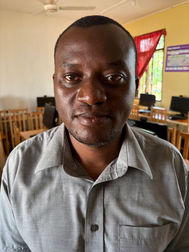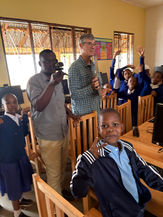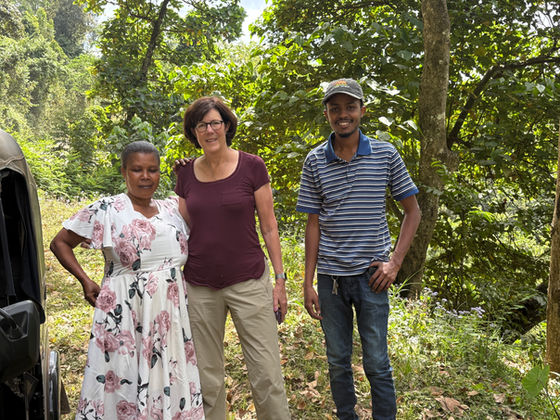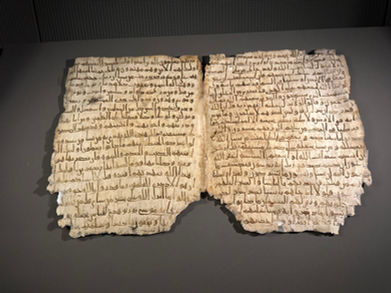


Back from Tanzania — and beyond!
We’ve just returned from our sixth trip to Moshi, Tanzania, after a busy, rewarding month filled with computer training, old friends, new schools, and a few side adventures along the way. Our main focus this year was Majengo Primary School, our newest partner and now the proud home of our fourth computer lab. We also revisited Kiusa Secondary and Jamhuri Primary, our earlier projects that continue to grow and evolve. And when weekends rolled around, we explored banana farms, coastal cities, and even fit in a stopover in Doha—plus one dazzling finale in Paris.
Majengo Magic
Majengo Primary, with its 1,250+ students and lively open-air campus, buzzes with energy from morning to afternoon. Setting up our fourth lab there was pure joy. After four school projects, we’ve refined a model that really works: 20 computers shared by classes of 50+ students, with a trained ICT teacher in charge. The head teacher’s decision to hire Mr. Haruna, a full-time ICT instructor, will make all the difference in keeping the lab active and sustainable year-round.
We started everyone off with learning games—simple, colorful programs that build mouse and keyboard skills while sneaking in lessons on math, logic, and memory. For students who had never held a mouse before, even “click and drag” felt like magic!
By week two, Grades 5 and 6 were writing their own short stories in Word, proudly adding images and decorations. Nearly every story somehow featured soccer—the national passion—even when the topic was “My Favorite Animal.” Some students wrote in Swahili, so we had fun using our phones to translate their creative plots.
The 4th graders moved from basic games to Paint and “Intro to Computers.” We helped them draw the Tanzanian flag with its bold blue, green, yellow, and black stripes. Once they got the hang of it, the flags morphed into bright houses, starry skies, and trees made from arrows! The youngest classes practiced mental math and logic through short games from their science books—laughing every time the computers “beat” them to the answer.
It wasn’t just the students learning—our Swahili improved too, as we coached kids through numbers and commands. Mr. Haruna was a patient translator when our vocabulary ran out. After nearly three weeks of steady progress, it was hard to say goodbye—but wonderful to leave knowing the lab was in great hands and being joyfully used. A special treat was the impromptu concert by the school orchestra - very nice.




Building on Momentum at Kiusa Secondary
Our next stop was Kiusa Secondary, where we had set up a lab last May. Their ICT teacher, Imani, has been doing fantastic work. He’s expanded his classes to the 8th graders and even launched an after-school Computer Club—thirty students strong!
We introduced them to Scratch, the fun, block-based programming language where you drag and drop pieces of code to make animations, games, and interactive art. Within minutes, the lab was a creative riot—cats dancing, balloons popping, shapes spinning, and the air full of laughter and random sound effects. It’s the perfect way to sneak in logic and problem-solving skills without it feeling like “coding.”
Several club members are eager to keep learning, so we’re sponsoring ten students for advanced training with our teacher-training partner, ACTT. They’ll deepen their Microsoft Office skills and begin graphic design, earning national certificates that will help them take their first steps toward professional ICT careers. We can’t wait to see where this takes them.
Returning to Jamhuri — Our First Lab
We also returned to where it all began—Jamhuri Primary, our first school project. The lab there is smaller, with 11 older computers, and after several years of steady use, a few machines needed some love. Mark rolled up his sleeves to fix hardware issues and reinstall software while Betsey ran short lessons for the younger classes.
The 2nd and 3rd graders practiced mouse skills, and we introduced Scratch to the 4th graders—perfect timing, since Tanzania’s new national curriculum will soon include Scratch programming in science for Grades 4–6. It’s exciting to see national recognition of the importance of technology education taking hold.


Weekends Off the Grid
We made sure to mix in some adventure, too!
One Saturday Joseph, our tuk-tuk driver, and his mother invited us to their banana farm in the lush foothills of Mount Kilimanjaro. Getting there was an adventure in itself—20 miles by tuk-tuk, then bumping along a rocky trail that seemed better suited for goats! Their two-acre farm overflows with bananas, pineapples, avocados, coffee, and passionfruit. Joseph showed us where his father’s childhood home once stood and where his grandparents are buried—a touching moment. After harvesting the last bananas, he chopped down the plants to make room for the new “pups.” It was a beautiful, grounding day—and a great chance for Betsey to test her “survival Swahili,” with Joseph stepping in to translate when things got tricky.
The following weekend we headed south to Dar es Salaam, Tanzania’s largest city and bustling port. It’s hard to imagine a bigger contrast with Moshi—Dar is hot, humid, and humming with energy. We stayed in a seaside hotel overlooking the bay, and toured a few museums, but our main goals were simple: a soccer match and seafood dinner.
At the stadium, we joined a friend from Dar to cheer on Yanga Sports Club, one of Tanzania’s top teams. The huge crowd included 250 fans packed into the stands, who danced, sang, and blew horns nonstop for 90 minutes. When Yanga won 1–0, we were instantly converted fans! It was extra special because our Moshi students are divided between Yanga and Simba fans, so now we can argue with authority.
Dinner afterward was perfect: fresh kingfish grilled over coals, eaten outdoors at a waterfront restaurant with the sunset glowing over the bay. A treat after weeks of simple meals in Moshi.
A highlight of Dar was meeting Betsey’s Swahili teacher, Joshua, in person for the first time after years of online lessons. Mark’s teacher lives in Zanzibar—maybe next time we’ll meet him too!
Looking Ahead
Before leaving Moshi, we visited two more schools—Mji Mpya Secondary and a nearby primary—as possible expansion sites for next year. Desks are already under construction, and we hope to deliver the computers early next year. This gives ACTT time to train the teachers and the school district time to assign a dedicated ICT instructor before our return in April.
We also attended a meeting of the Moshi Rotary Club, where we met enthusiastic community leaders working to collaborate on a variety of education projects. Add in home-cooked dinners with Madam Jacqueline and her husband, as well as Robert, the founder of ACTT, and our final week was filled with warmth, great conversation, and delicious local vegetables and home-raised chickens!
After six visits, it’s deeply rewarding to see these professional partnerships turning into true friendships. Each trip strengthens our connection to Moshi and builds the local capacity to bring technology—and opportunity—to more students every year.





A Whirlwind Journey Home
Because we were flying Emirates, we managed a two-night stopover in Doha, Qatar. Determined to make the most of our one full day, we dove right in:
Friday evening we wandered through the lively Souq Waqif, a maze of narrow lanes packed with restaurants, fabric stalls, spices, falcons, and tourists. We chose a Persian restaurant for a delicious lamb dinner amid the bustle. Friday night in the Arab world is like Saturday night at home—crowded, lively, and mostly men socializing in groups.
On Saturday, we set out early (and in search of air conditioning!) for the IM Pei–designed Museum of Islamic Art, where exquisite collections of glass, textiles, metalwork, coins, and manuscripts spanned the 7th–20th centuries—including the remarkable Blue Qur’an.
Next stop: the National Museum of Qatar, an architectural wonder shaped like interlocking desert rose crystals. Inside, we learned about Qatar’s transformation—from a pearling economy to a global energy hub. The exhibits were beautiful, though the Arabic-only sections challenged our limited language skills! We capped the day at the beach, shaded and breezy, before returning to the Souq for one last dinner. A whirlwind—but worth every minute.
Finally, we made one last stop—Paris! Thanks to Patrick, we joined a very small tour of Notre Dame Cathedral after its restoration. Stepping inside took our breath away: the stone gleamed white again, the paintings revealed colors unseen in decades, and the stained glass sparkled with life. Even the ceiling showed no trace of the fire that once tore through it. Climbing 424 steps to the top gave a close-up look at the new timber framework and the famous gargoyles—magical!
Mark stayed on for two more weeks—a rail journey across Europe. More on his travels next time…








































